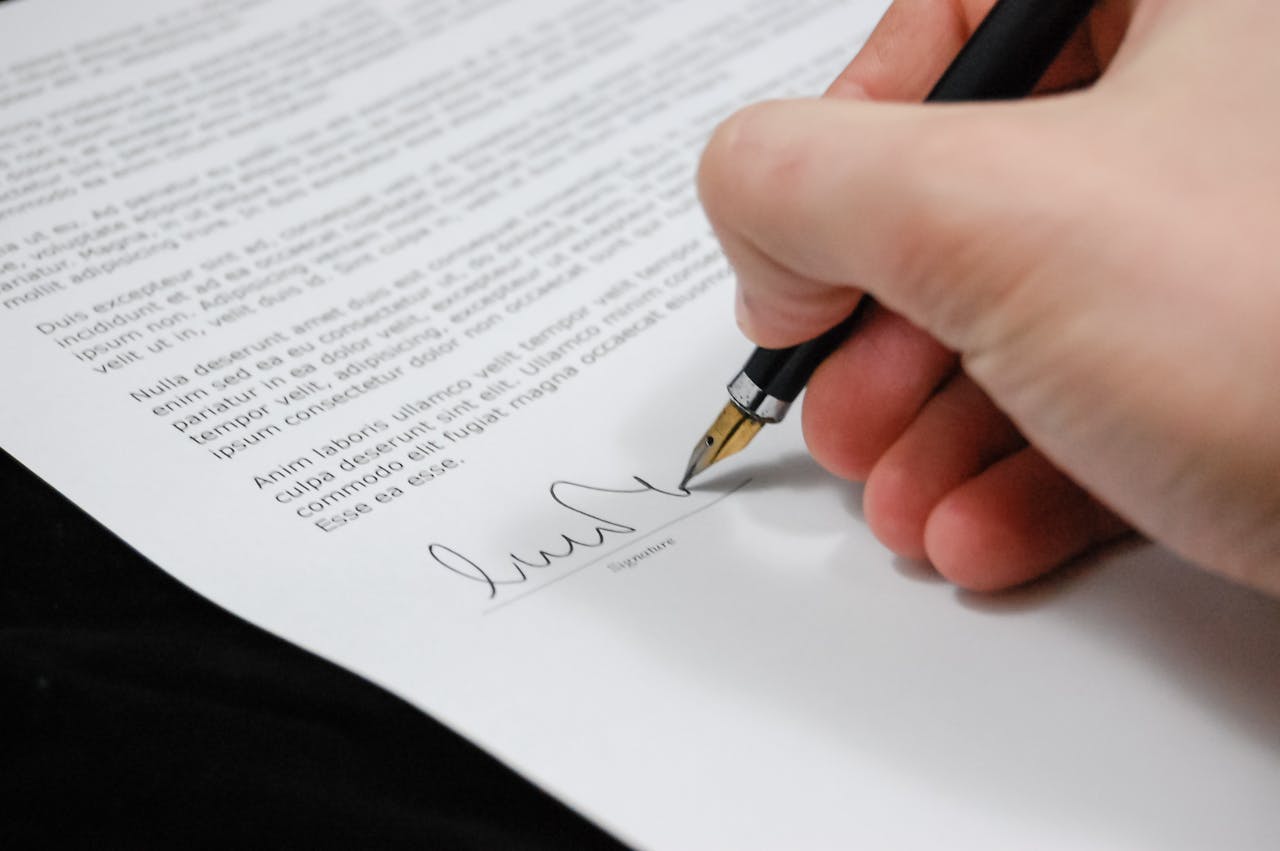Publishing content in today’s digital world means walking a careful line between free expression and legal liability. Whether you’re a blogger, social media manager, journalist, or small business owner, understanding defamation law isn’t just academic—it’s practical protection against costly lawsuits and reputation damage. The legal landscape around false statements has grown more complex as technology blurs traditional boundaries between written and spoken communication. This guide breaks down what you need to know about defamation, libel, and slander so you can publish with confidence while protecting yourself from legal exposure.
PR Overview
- Understanding the Core Distinctions: Defamation, Libel, and Slander
- The Legal Elements Required to Prove Defamation
- Practical Steps to Protect Yourself When Publishing Content
- Your Legal Defenses and What Defamation Litigation Actually Costs
- How Digital Technology Changes Defamation Risk
- Moving Forward With Confidence and Caution
Understanding the Core Distinctions: Defamation, Libel, and Slander
Defamation serves as the umbrella term covering any false statement that damages someone’s character and is communicated to a third party. This third-party communication requirement is critical—if you call someone a thief directly to their face with no one else present, that’s not defamation because it doesn’t damage their reputation in anyone else’s eyes. The harm comes from what others think, not what the target person knows you said.
Within defamation, two distinct categories exist. Libel refers specifically to written defamatory statements, including signs, pictures, and other visual representations. Slander refers exclusively to spoken defamatory statements. This distinction matters because courts typically treat libel as more harmful than slander—written statements persist longer and distribute more widely than spoken words.
Technology has complicated these traditional categories considerably. Internet videos, online comments, social media posts, and digital articles all constitute libel rather than slander because they exist in written or recorded form. Even spoken speech that has a written transcript—podcasts, broadcast speeches, recorded videos—falls under libel rather than slander. The permanence and searchability of digital content means it carries the same legal weight as traditional printed statements.
The law recognizes that some statements are so obviously harmful that damage is presumed. These fall into two categories: libel per se and slander per se. Libel per se includes written statements that are inherently damaging—false claims of criminal activity, sexual misconduct, or professional incompetence. These statements are so clearly harmful on their face that the plaintiff doesn’t need to prove injury. Slander per se is the spoken equivalent, covering the same types of inherently damaging accusations.
When a statement doesn’t fall into these per se categories, it’s classified as defamatory per quod. These statements require the plaintiff to prove “special damages”—specific, quantifiable economic loss such as a lost job, lost sales commission, or lost customers. The harmful effect must be apparent from the statement itself; if extrinsic facts are needed to understand the damage, it’s not per se defamation.
The Legal Elements Required to Prove Defamation
Winning a defamation case requires proving four core elements. First, the defendant must have made a false statement of fact. Opinions and hyperbole typically receive protection because they’re not verifiable as true or false. Saying “I think John is a terrible manager” is an opinion. Saying “John stole money from the company” is a statement of fact that can be proven true or false.
Second, the defendant must have known or should have known the statement was untrue or defamatory. This element addresses the speaker’s state of mind and level of care. Third, the false statement must have been spread to at least one third party—publication to someone other than the target is required. This happens automatically with any publicly posted content. Fourth, the false statement must have damaged the plaintiff’s character or reputation.
The burden of proof differs dramatically based on who is suing. For private citizens, defamation can be proven when the statement was made with negligence—the person speaking should have known it was false or should have questioned it before publishing. This is a relatively low bar focused on whether you acted reasonably in verifying information.
For public figures and celebrities, a much higher standard applies. These plaintiffs must prove the statement was made with “actual malice”—knowledge of its falsity or reckless disregard for the truth. This standard means public figures must show by clear and convincing evidence that you either knew the statement was false or had serious doubts about its truth but published it anyway. This higher bar reflects the principle that erroneous statements are inevitable in free debate about matters of public interest, and public figures have voluntarily exposed themselves to increased scrutiny.
Reckless disregard for the truth means more than just failing to investigate. It requires evidence that you had serious doubts about the truth of your statement but published it anyway, or that you purposefully avoided learning the truth. Simply making a mistake after reasonable fact-checking doesn’t meet this standard.
Practical Steps to Protect Yourself When Publishing Content
Before publishing any factual claim about another person or business, verify the information through reliable sources. Maintain documentation showing you took reasonable steps to confirm the truth of statements before publication. This documentation becomes your evidence that you acted without negligence or actual malice if someone challenges your content.
Understanding the difference between statements of fact and opinions is critical for safe publishing. Statements of fact are verifiable as true or false and can form the basis of a defamation claim. Opinions, even harsh ones, generally receive First Amendment protection. The key is whether a reasonable person would interpret your statement as asserting a fact or expressing a subjective viewpoint.
When reporting on what others have said, attribution doesn’t always protect you. If you repeat someone else’s false statement, you can still be liable for defamation unless you’re reporting on a matter of public interest and make clear you’re conveying what someone else said rather than vouching for its truth. Simply adding “allegedly” or “reportedly” provides limited protection—you still need a reasonable basis for believing the underlying information might be true.
Any written or printed article is potentially libelous if it tends to expose the subject to public contempt, ridicule, aversion, or disgrace, or induces an unfavorable opinion in the minds of reasonable people. This broad standard means you should carefully consider how your audience will interpret your statements, not just what you intended to convey.
For different publishing formats, the risks vary. Blog posts and articles carry traditional libel risks and should undergo thorough fact-checking before publication. Social media posts, despite their informal nature, carry the same legal weight as any other written statement. Email newsletters and press releases require particular care because they’re distributed to defined audiences and create clear evidence of publication. Video content with spoken statements that are recorded falls under libel rather than slander, so transcripts and recordings create permanent evidence of what you said.
Your Legal Defenses and What Defamation Litigation Actually Costs
If someone sues you for defamation, several defenses are available. Truth is a complete defense to defamation claims—if you can prove your statement was true, you win regardless of how much damage it caused. This defense requires solid documentation, which is why maintaining records of your fact-checking process is so important.
Opinion is another strong defense. Statements that reasonable people would interpret as subjective viewpoints rather than factual assertions receive First Amendment protection. The context matters—the same words might be protected opinion in an editorial but actionable fact in a news article.
The First Amendment protects speech from government repercussions but does not protect libel, slander, or defamation. Freedom of speech doesn’t protect you from private lawsuits or from private entities like social media platforms that can ban you for defamatory content. The constitutional protections apply to government censorship, not civil liability for false statements.
Defamation lawsuits are civil suits filed in state court seeking monetary damages. These damages can include pain and suffering, reputation harm, lost wages, lost earning ability, and emotional distress. For libel per se cases, damages are presumed—the plaintiff doesn’t need to prove specific economic harm. For other cases, the plaintiff must demonstrate quantifiable losses.
The cost of defending a defamation claim varies widely but typically ranges from tens of thousands to hundreds of thousands of dollars depending on the complexity of the case and how far it proceeds. Most cases settle before trial, but even reaching a settlement requires significant legal fees. Some professional liability insurance policies and media liability insurance can cover defamation claims, though coverage varies significantly by policy.
How Digital Technology Changes Defamation Risk
The legal framework for defamation continues to evolve as communication technology changes. Traditional distinctions between written and spoken defamation are becoming less clear-cut in the digital age. The permanence and wide distribution potential of digital content means courts treat it seriously—a tweet can be just as legally significant as a newspaper article.
Platform liability and responsibility for false information continues to evolve legally. Understanding how your publishing channel affects your legal exposure is critical. Different platforms have different policies about removing allegedly defamatory content, and your relationship with the platform (employee, independent contractor, user) affects your liability exposure.
The searchability of digital content creates lasting harm that didn’t exist with traditional slander. A false statement made in a podcast or video can be found years later, transcribed, and shared widely. This permanence is one reason why courts treat recorded speech as libel rather than slander—the traditional rationale that spoken words fade quickly no longer applies when those words are recorded and searchable.
Anonymous online posts present unique challenges. Plaintiffs can pursue legal processes to unmask anonymous speakers, but this adds complexity and cost to defamation cases. If you’re publishing anonymously, understand that your identity can potentially be revealed through legal discovery if someone sues for defamation.
Moving Forward With Confidence and Caution
Understanding defamation law empowers you to publish content confidently while protecting yourself from legal exposure. The key principles are straightforward: verify factual claims before publishing, distinguish clearly between facts and opinions, maintain documentation of your verification process, and understand the higher standards that apply when discussing public figures.
Your next steps should include reviewing your current content creation process to identify where fact-checking and verification could be strengthened. Consider whether professional liability insurance makes sense for your publishing activities, particularly if you regularly publish content about other people or businesses. When in doubt about whether specific content creates legal risk, consult with an attorney before publishing—the cost of a legal review is far less than the cost of defending a defamation lawsuit.
The law protects robust public debate and allows for honest mistakes made in good faith. By understanding where the legal lines are drawn, you can publish meaningful content that contributes to public discourse without exposing yourself to unnecessary legal risk. The goal isn’t to avoid all controversy or criticism—it’s to ensure that when you make strong statements, they’re grounded in verifiable facts or clearly presented as your opinion.
How Security Leaders Position Credibility in Crypto Markets
When a security incident hits, the clock starts ticking in minutes, not hours. Your investors...
Predictive Crisis Communications Using AI and Real-Time Data
Crisis communications has entered a new era where waiting for a threat to materialize means you've...
Ethical AI in PR: New Standards for Transparency and Compliance
Public relations professionals face a reckoning. As artificial intelligence tools become standard...




